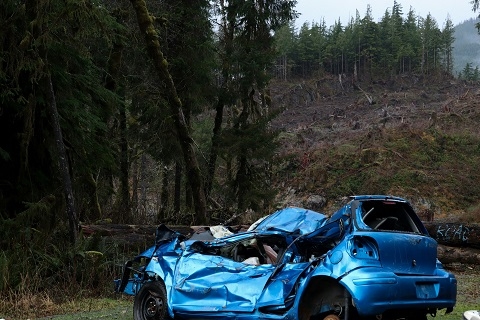Understanding Car Safety Testing
Safety ratings are an essential factor to consider when purchasing a car. But how are car safety ratings tested? The National Highway Traffic Safety Administration (NHTSA) and the Insurance Institute for Highway Safety (IIHS) conduct rigorous tests on vehicles to evaluate their performance in crash scenarios. Understanding the results of these tests can give you confidence that the vehicle you choose will help you stay protected on New Mexico's winding roads and highways.
What Are Car Safety Ratings and Why Do They Matter?
Safety ratings transform complex crash data into straightforward scores for comparing brands. If you have a family, you want a vehicle that can protect everyone, especially your kids, during a crash.
Good safety scores can result in insurance premium savings. The Ford Bronco costs owners approximately $2,738 per year for insurance, which is nearly $339 less than the national average for other SUVs. Insurance companies offer savings for features such as anti-lock brakes and stability control. Forward collision warning and auto emergency braking reduce crashes by 49% and injuries by 53%, a significant benefit when you're driving on Rio Rancho's busy streets.
If your teenager is driving your car, statistics are even more significant. Drivers aged 16 to 19 are three times more likely to be involved in a fatal crash per mile than drivers over 20. In 2021, young drivers accounted for 8.5% of total drivers in fatal accidents, despite comprising only 5.1% of licensed drivers in the U.S. With car insurance premiums averaging $2,068 per year in 2025, choosing a vehicle with top safety marks makes financial sense.
The Two Major Testing Organizations
Two groups lead car safety testing. The NHTSA is part of the U.S. Department of Transportation. This organization uses a 5-star system that evaluates frontal, side, and rollover tests. The IIHS tests eight areas, rating vehicle performance as poor, marginal, acceptable, or good.
The NHTSA's 2025 testing covers almost 87% of new cars, including eight electric and hybrid models. The IIHS purchases test vehicles from dealerships just like you would. Both groups utilize crash test dummies equipped with sensors to track forces and potential injuries, making their findings particularly helpful when deciding between models.
Safety standards are stricter than ever. Only 48 models earned top safety awards in 2025, compared to 71 last year. Testing evolves to match new technology and safety challenges, so today's ratings reflect what matters for New Mexico's varied conditions.
NHTSA Safety Testing Protocol
NHTSA testing simulates crash scenarios. For a frontal crash test, a vehicle crashes into a barrier at 35 mph with dummies representing an average-size adult male in the driver's seat and a smaller adult female in the passenger seat. Side crashes use a 3,015-pound barrier at 38.5 mph. Side pole crash tests mimic crashing into a telephone pole on the driver's side by hitting a 10-inch pole at 20 mph with a smaller female dummy in the driver's seat.
The 2025 testing program reviews the following four new safety technology tests:
-
Blind-spot warning
-
Blind-spot intervention
-
Lane-keeping assist
-
Pedestrian automatic emergency braking
Ford vehicles score well on testing. The NHTSA awarded the 2025 Ford Bronco five stars in the frontal and side crash tests and four stars overall for rollover resistance, while the fully electric 2025 Mach-E has five stars for side crash and rollover tests and four out of five stars for frontal crash testing.
IIHS Comprehensive Safety Evaluation
The IIHS conducts eight different tests: small overlap front, moderate overlap front, side, headlights, vehicle-to-vehicle front crash prevention, pedestrian front crash prevention, seat belt reminders, and LATCH. For the small overlap front test, a car crashes into a barrier at 40 mph to mimic hitting a pole or tree with the front corner of a vehicle. There are also broader front-end crashes tested at the same speed, along with evaluations of what happens when another vehicle hits the side of your vehicle at 31 mph.
Pedestrian testing is also vital, with test scenarios involving adults or children crossing in front of cars under both daytime and nighttime conditions using low and high beams. These tests are especially important for New Mexico's dark desert roads and busy intersections.
The IIHS named the Ford Mustang Mach-E a Top Safety Pick+ for 2025. With fewer models receiving these awards due to stricter standards, Ford's achievements are even more impressive.
Your Safety-First Choice: Finding the Right Vehicle for Your Needs
NHTSA and IIHS ratings play a vital role in the safety story. Features that help ensure your safety on long desert drives and in Albuquerque's stop-and-go traffic include adaptive cruise control, automatic high beams, automatic emergency braking, blind-spot monitoring, and pedestrian detection.
Ford vehicles consistently rank high for safety, making any new Ford model worth considering. Are you ready to explore the best options? Contact our Chalmers Ford team to find the perfect match.
Image by Izzy E | Licensed with Unsplash License
